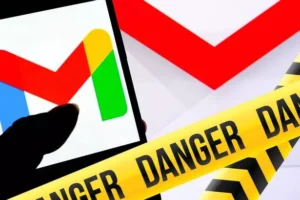In 2025, your Gmail account isn’t just an inbox—it’s the key to your digital identity. With increasing cyber threats, it’s vital to recognize the red flags before it’s too late. Google has built-in alerts to notify users of suspicious activity, but many people ignore them—until the damage is done.
Below are 7 terrifying Gmail hacking alerts you should never ignore, along with actionable steps to secure your account and peace of mind.
1. Suspicious Login Attempt from Unknown Device
One of the most common hacking indicators is a login attempt from a device or location you’ve never used before. Google sends an alert to your inbox or phone when this occurs, often flagged as a “Security alert” email.
Why It’s Scary:
-
It means someone has your password.
-
Hackers can use it to access other linked accounts (banking, social media).
What You Must Do:
-
Immediately change your Gmail password.
-
Log in to Google Account Security and sign out of all devices.
-
Enable 2-Step Verification to add a second layer of protection.
2. Password Change You Didn’t Make
If you receive a notification that your Gmail password has been changed—and you didn’t do it—act instantly.
Why It’s Scary:
-
It means the hacker has already accessed your account and may have locked you out.
-
Your recovery methods (phone, backup email) may have also been changed.
What You Must Do:
-
Try to recover your account immediately via Google’s recovery page.
-
If successful, change your password and review recent activity.
-
If recovery fails, contact Google Support for help restoring your access.
3. New Recovery Email or Phone Number Added
A hacker’s first move after breaching your account is often to change the recovery options, so you can’t regain control.
Why It’s Scary:
-
Prevents you from resetting your password.
-
Allows the hacker to recover the account at any time—even if you change the password.
What You Must Do:
-
Remove unauthorized recovery details from the “Personal Info” section.
-
Set a secure phone and email you fully control.
-
Turn on alert notifications for recovery changes via the Google Account dashboard.
4. Mass Emails Sent from Your Account
If contacts report strange messages from your Gmail, your account may have been hijacked to send spam or phishing emails.
Why It’s Scary:
-
Google could suspend your account for spam activity.
-
You may unknowingly help hackers scam your friends, colleagues, or clients.
What You Must Do:
-
Check your “Sent” and “Trash” folders.
-
Review Filters and Forwarding Settings for hidden rules.
-
Run a full malware scan on your device in case of keyloggers.
5. Access Granted to Suspicious Third-Party App
Sometimes, hackers don’t even need your password—they gain access by tricking you into giving permission to a malicious third-party app via OAuth phishing.
Why It’s Scary:
-
These apps can read, send, delete emails, or manage settings without your knowledge.
-
Access stays active until you manually revoke it.
What You Must Do:
-
Visit Google Account Permissions.
-
Remove access to any unfamiliar apps or services.
-
Don’t click “Allow” on any OAuth window without verifying the source.
6. Login from New Geographic Location
Even if you haven’t shared your password, hackers using VPNs or remote servers might still try to log in. Google alerts you when a login is detected from an unusual geographic region.
Why It’s Scary:
-
Indicates account credentials may be leaked or sold on the dark web.
-
Could be part of a larger breach targeting multiple accounts.
What You Must Do:
-
Confirm whether you’ve used any VPN or logged in while traveling.
-
If not, secure your account immediately.
-
Use Google’s Security Checkup tool to investigate and fix vulnerabilities.
7. Security Settings Have Been Modified
If you receive alerts about changes to settings like:
-
Disabled 2FA
-
New forwarding filters
-
POP/IMAP enabled without your action
…it’s a huge red flag that your account is under threat.
Why It’s Scary:
-
Attackers can silently forward your emails to themselves.
-
They can monitor communications, steal data, or intercept login links.
What You Must Do:
-
Revert any changes from the Settings > See All Settings > Filters and Forwarding.
-
Re-enable 2-Step Verification.
-
Scan for any suspicious backup codes or sign-in activity.
-

Bonus: What to Do After Spotting a Hacking Alert
If any of the above alerts show up in your inbox or on your device:
✅ Change your password immediately
✅ Enable or double-check 2-Step Verification
✅ Review recent account activity & security logs
✅ Remove unknown apps and reset recovery info
✅ Contact Google support if needed
And most importantly, update passwords on all linked services like banking, social media, and cloud storage.
Final Thoughts: Take Gmail Security Seriously—Starting Today
Ignoring a Gmail hacking alert can cost you more than just your email—it can expose your financial accounts, identity, and sensitive data. These alerts are not just system messages—they’re early warnings from Google that your account may be at risk.
By acting quickly and staying informed, you can stop cyber attackers in their tracks and keep your digital life safe. Don’t wait for the worst to happen—secure your Gmail today.


